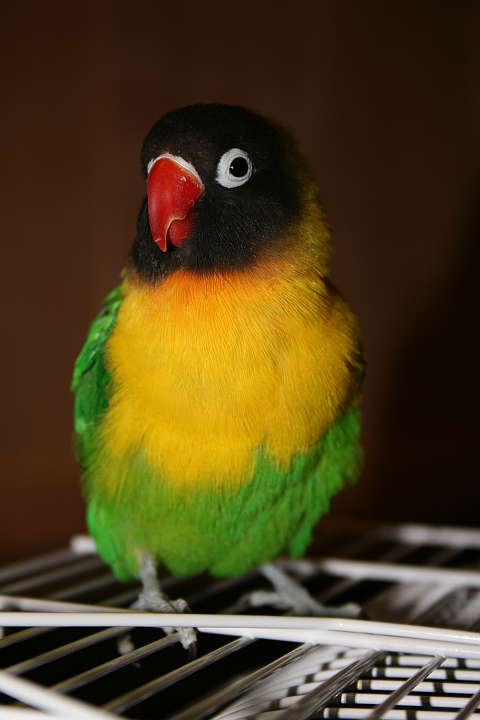Despite the “love” part of their name, these tiny parrots (9 species in the genus Agapornis) are actually quite feisty and downright aggressive towards one another at times. Introducing new birds is not easy, but once a pair forms the birds will be quite devoted to each other, and may well produce eggs. Small size suits lovebirds well to indoor breeding, and renders them a logical choice for aviculturists with limited space.
Some Cautions
Before embarking on lovebird breeding, please bear in mind that this undertaking is not without its risks. You may wind up with birds that do not get along, and if you keep more than 1 pair you will likely need separate facilities for the breeders (except perhaps in an outdoor aviary).
Health concerns may also arise – females may become egg bound, or produce too many clutches. Also, even friendly, long-term pets usually become quite protective of their nests, and will remain aggressive towards you throughout the breeding season.
Distinguishing the Sexes
Unfortunately, males and females of the most commonly kept lovebirds – the peach-faced, Fischer’s and masked – are nearly indistinguishable by eye. You will need to watch their behavior closely, or submit samples for DNA or feather sexing to be sure.
Abyssinian, Madagascar and red-faced lovebirds are sexually dimorphic, but these species are only infrequently kept as pets in the USA.
The Nest
Wild lovebirds nest in tree hollows or appropriate (sometimes forcibly ejecting the owners!) the nests of swifts and various weavers. In captivity a specially designed lovebird nest box will suit them well. The nest should be positioned as high within the cage as is possible.
Wood shavings should cover the floor of the box to a depth of 2-3 inches. This will simplify cleaning and prevent the splay-legged condition that is often seen in chicks raised on hard surfaces.
Wild lovebirds repeatedly carry fresh bark into their nests, a habit which may increase humidity. Captive lovebirds will readily utilize moistened cypress for this purpose. Lightly spraying the female lovebird when she is out of the nest will also help in this regard (do not spray within the box itself). Commercial nesting material should also be available.
Peach-faced and several other lovebirds tuck nesting material within their feathers to transport it to the nest…don’t miss watching this unique behavior if you have the opportunity.
The Eggs and Chicks
Female lovebirds usually lay their first egg 7-10 days after copulation, with an additional egg being produced at intervals of 1-2 days thereafter. A full clutch consists of 4-7 eggs, and most females do not begin incubating until several eggs have been laid.
Usually, the hen sits and is fed by the male. Male masked lovebirds, however, often sit near the hen, but it is not clear if they are actually doing anything useful, in terms of incubation!
The eggs hatch in 20-27 days, and the chicks leave the nest after 35-50 days. They are fed by their parents for an additional 2 weeks after fledging, by which time they are usually completely independent.
Additional Reading
Please see my article on the Masked or Yellow-Collared Lovebird for information on the care and natural history of this and other lovebird species.
Image referenced from Wikipedia and originally posted by TheAlphaWolf
 That Bird Blog – Bird Care and History for Pet Birds
That Bird Blog – Bird Care and History for Pet Birds

 Click
Click